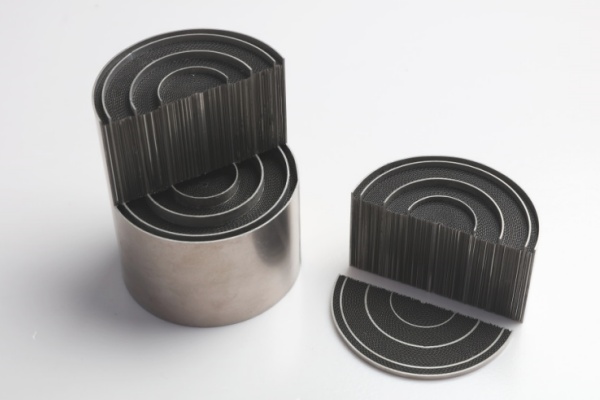To be a valuable global supplier
for metallic honeycombs and turbine parts
Release time:2025-07-01
The Metal Honeycomb Substrate for desulfurization and denitrification represents a breakthrough in air pollution control, combining high mechanical strength with exceptional catalytic efficiency. Its unique porous structure, typically made from corrosion-resistant alloys, allows simultaneous removal of sulfur oxides (SOₓ) and nitrogen oxides (NOₓ) from industrial exhaust streams. This article explores the working principles and key application scenarios of Metal Honeycomb Substrate for desulfurization and denitrification, highlighting its role in sustainable industrial processes.

The Metal Honeycomb Substrate for desulfurization and denitrification achieves pollution reduction through two primary pathways: catalytic oxidation of SO₂ and selective catalytic reduction (SCR) of NOₓ. The substrate’s honeycomb design maximizes gas-catalyst contact area while minimizing pressure drop, a critical advantage over traditional pellet or monolithic catalysts.
In desulfurization, the substrate’s active coating (e.g., transition metal oxides) converts SO₂ into sulfates, which are later captured. For denitrification, ammonia or urea is injected upstream, reacting with NOₓ on the substrate’s surface to form harmless nitrogen and water. The Metal Honeycomb Substrate for desulfurization and denitrification excels in stability under high-temperature, high-humidity conditions common in power plants and refineries.
Coal-Fired Power Plants
Flue gas treatment systems integrate Metal Honeycomb Substrate for desulfurization and denitrification to meet ultra-low emission standards (e.g., <35 mg/m³ for NOₓ). Its durability outperforms ceramic alternatives in corrosive ash-laden environments.
Chemical Manufacturing
Petrochemical facilities employ this technology to decompose organic sulfur compounds (e.g., mercaptans) and NOₓ from catalytic cracking units, ensuring compliance with stringent air quality regulations.
Waste Incineration
The substrate’s ability to handle fluctuating gas compositions makes it ideal for municipal waste incinerators, where it simultaneously removes acidic gases (SO₂/HCl) and NOₓ while suppressing dioxin formation.
Marine Emission Control
Ship scrubbers increasingly adopt Metal Honeycomb Substrate for desulfurization and denitrification to reduce sulfur emissions from heavy fuel oil, aligning with IMO 2020 sulfur cap requirements.
The Metal Honeycomb Substrate for desulfurization and denitrification is reshaping industrial emission control with its multifunctional, long-lasting, and cost-effective design. Future advancements may focus on integrating smart sensors for real-time performance monitoring or developing low-temperature catalysts to expand its use in decentralized applications. As global emission standards tighten, this technology will remain pivotal in achieving carbon neutrality goals.